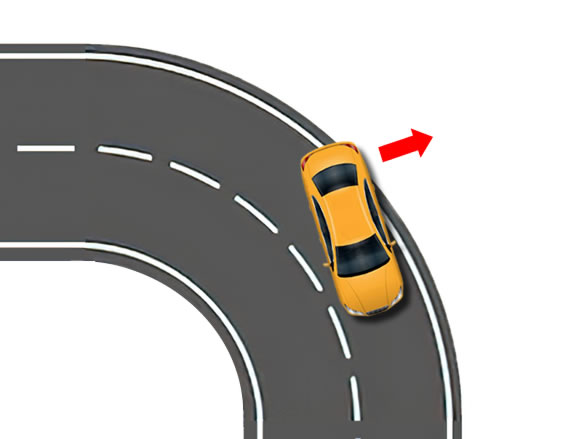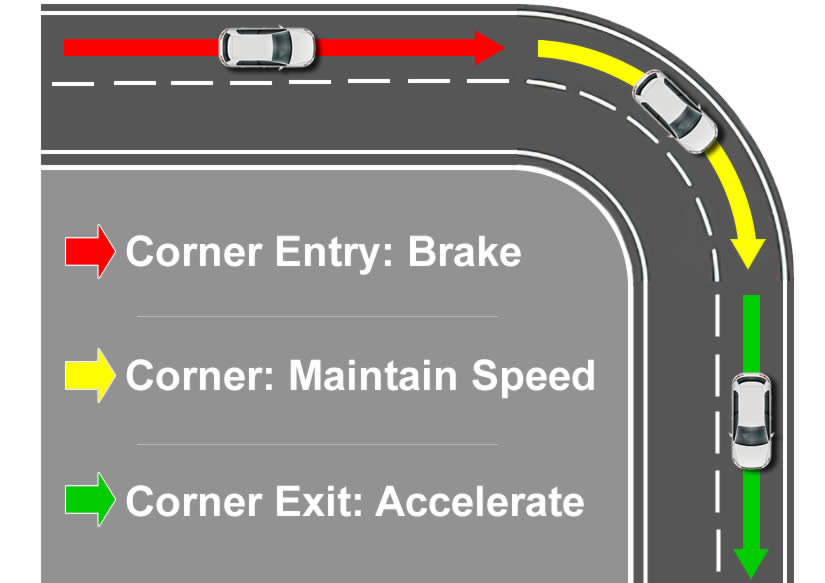Should You Brake While Turning?
You should always avoid heavy braking or accelerating while turning as this can cause your car to become unstable. Use the following braking procedure while turning:
- Corner entry: Use your brake to lose all unwanted speed before you enter the corner. Enter the turn at the speed you intend on driving through it.
- Corner: While making the turn, maintain a stable speed. Only lightly apply the brake or accelerator while on the turn.
- Corner exit: As you begin to exit the turn and straighten up the steering wheel, you can gradually apply more throttle.
Why Should’t You Brake While Turning?
Your car is at its most stable while maintaining a consistent speed and in a straight line. Your car become less stable when you brake because much of its weight shifts to the front. This increases grip at the front of the vehicle, while reducing it at the rear. The opposite occurs when you accelerate, the front becomes lighter while the rear becomes heavier.
Now let’s look at making a turn and how this increases instability. Just before you come to a turn, your car has already gained momentum. As you begin to turn the wheels, your car still wants to go in a straight line. This can be felt in the form of inertia. If you’re making a right turn, it feels as though your body is being pushed to the left, while in fact it’s actually continuing in a straight line.

In order to make a turn, your car needs to overcome momentum. During the turn, your car is less stable because you are relying on your car tyre’s grip and road traction to successfully make the turn rather than to continue in a straight line.
If we then add in braking, we are then adding another layer of instability on top. Remember that braking shifts the weight to the front (more grip) and makes the rear light (less grip). Braking while turning therefore increases the risk of the rear of your vehicle to slid outwards.
How Much Braking While Turning?
There are so many variables that can determine how much braking your car can handle while turning before a loss of traction occurs. Some of these are:
- Your car’s weight distribution and how well balanced it is
- Whether your car has stability technology and how effective it is
- The type of tyres you have on your vehicle, their condition and current air pressure
- The road surface and how much traction it provides
- Condition of road surface
- Road camber
- Any debris on the road
- Weather conditions such as rain or ice
With so many variables, the answer is to brake as little as possible while turning. Scrub off the majority of unwanted speed on the straight and on the turn, make slight adjustments to the brake or accelerator to maintain a consistent stable speed.
You also need to take into consideration what you cannot see around a corner. Could there be a cyclist in the middle of the road or a pedestrian crossing and would you be able to safely brake in time?

This helped me alot
Good to hear, Anandhu.